Fin Placement
You Put the Fin Where?? (A Guide To Surfboard Fin Placement)
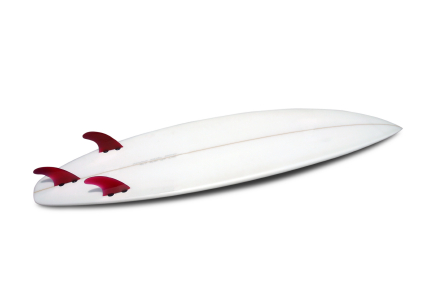 One very important aspect of handling characteristics is surfboard fin placement. How do you want the surfboard to respond? Are you after long, arching turns? Maybe you would rather make pivotal turns. Although these are important questions, we often overlook surfboard fin placement due to the fact that it is near impossible to experiment, unless you but a bunch of new surfboards.
One very important aspect of handling characteristics is surfboard fin placement. How do you want the surfboard to respond? Are you after long, arching turns? Maybe you would rather make pivotal turns. Although these are important questions, we often overlook surfboard fin placement due to the fact that it is near impossible to experiment, unless you but a bunch of new surfboards.
Here are some general guidelines to follow when placing surfboard fins:
Rule #1:
A spread out fin cluster will result in a longer turning arc. This is great for larger, faster waves and is more common on longer boards or guns.
Rule #2:
A compacted fin cluster produces shorter turning arcs, making an ideal design for shortboards. This should serve you well in a variety of conditions, depending on your skill level.
Rule #3:
Employ a forward fin setup for a looser feeling, less hold, and the shortest turning arc. This will accommodate pivotal surfing on small to medium waves.
Rule #4:
The normal fin setup will offer a good balance between control and looseness. It is a versatile design and one commonly used. It works in a wide range of conditions.
Rule #5:
Fin placement toward the back of the surfboard provides more hold and a more drawn out turning characteristic. This works well in bigger conditions and suits barrel riding.
Rule #6:
Fins with more toe-in (fin line pointing towards the stringer) give the surfer more of a loose feeling but produces more drag. This requires more turning to gain speed and performs best in small to medium waves.
Rule #7:
Fins with more cant (leaning away from the stringer) will give a surfboard less drive and projection out of turns. A setup with less cant offers a stiffer feel with more drive and projection that would help in bigger, hollow surf.
Longboard fin placement plays out a bit differently. Making fin changes as small as a quarter inch can make a big difference. If you’re more into nose-riding, then you should move the center fin back a bit to encourage stability. A single fin placed too far forward will cause some spin-outs. This is why you will see longboards with single fins positioned further back than the center fin of a three fin system. Single fin surfboards are better for nose-riding because they encourage gliding in a straight line. Smaller outside fins encourage directional change, making it more difficult to ride the nose.
Three fin longboards are more versatile than single fins. If you’re surfing smaller waves, then you should move the center fin forward to loosen up the surfboard. When placing surfboard fins, if you’re looking for extra hold and longer arcing turns, then moving the center fin back is your best bet. You want to avoid using too large of a middle fin or you will create too much stiffness and drag.
Whatever your means of transportation in the water, your surfboard fin placement will affect the turning characteristics. If you’re after a particular style of surfing, a small adjustment or a new board with different fin placement may offer a new perspective to riding waves. It may even make you feel better about your surfing if you know that your equipment is dictating your maneuvers. While it is fun to push the limitations of a board, specialization can improve your style and make your time in the water more enjoyable. We at SurfScience.com think that sounds like a worthy endeavor.

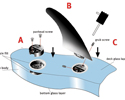
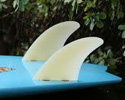
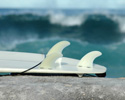


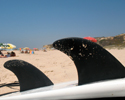


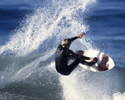

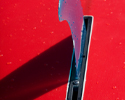
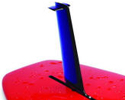
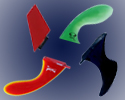
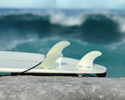
2 Comments